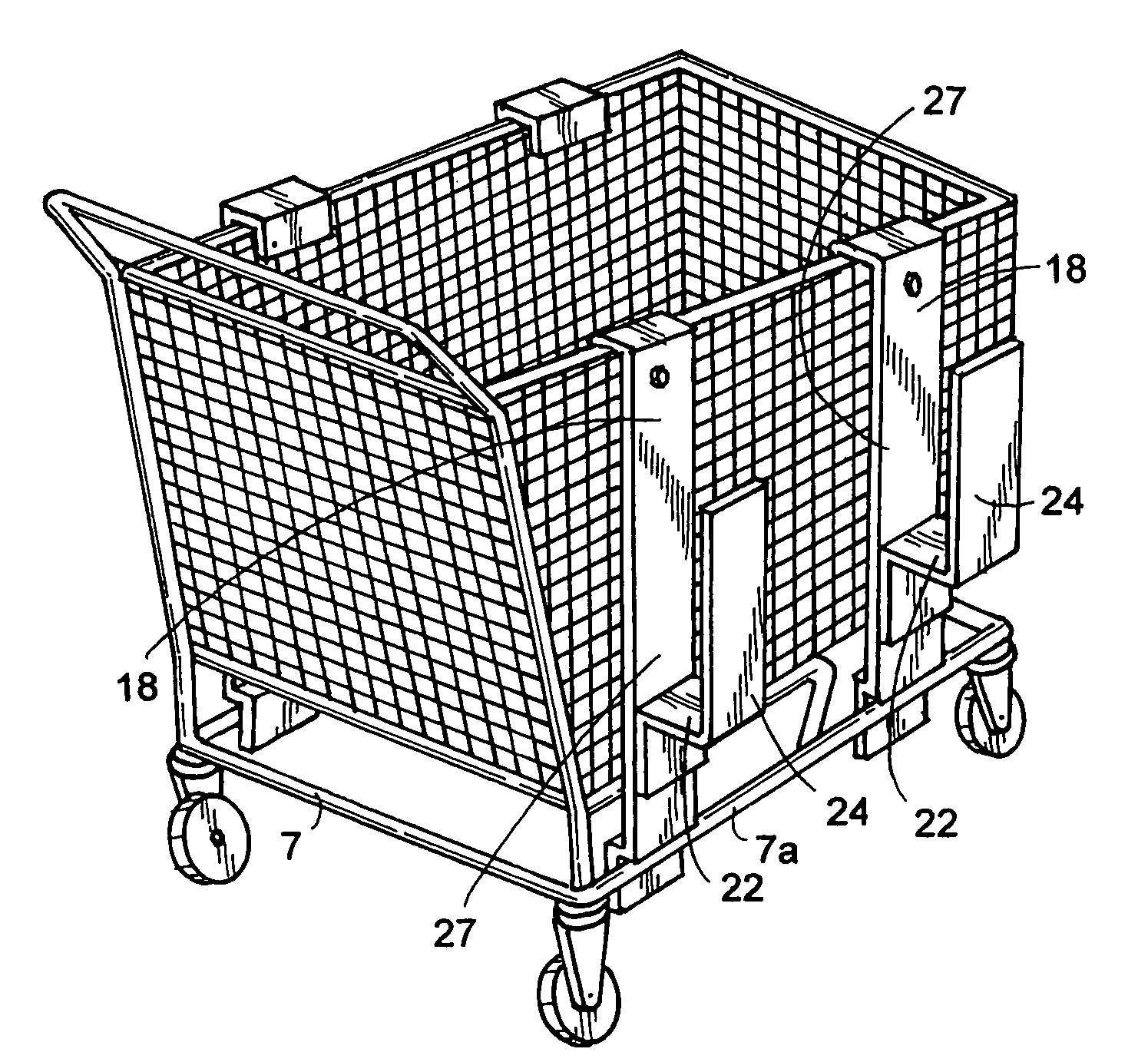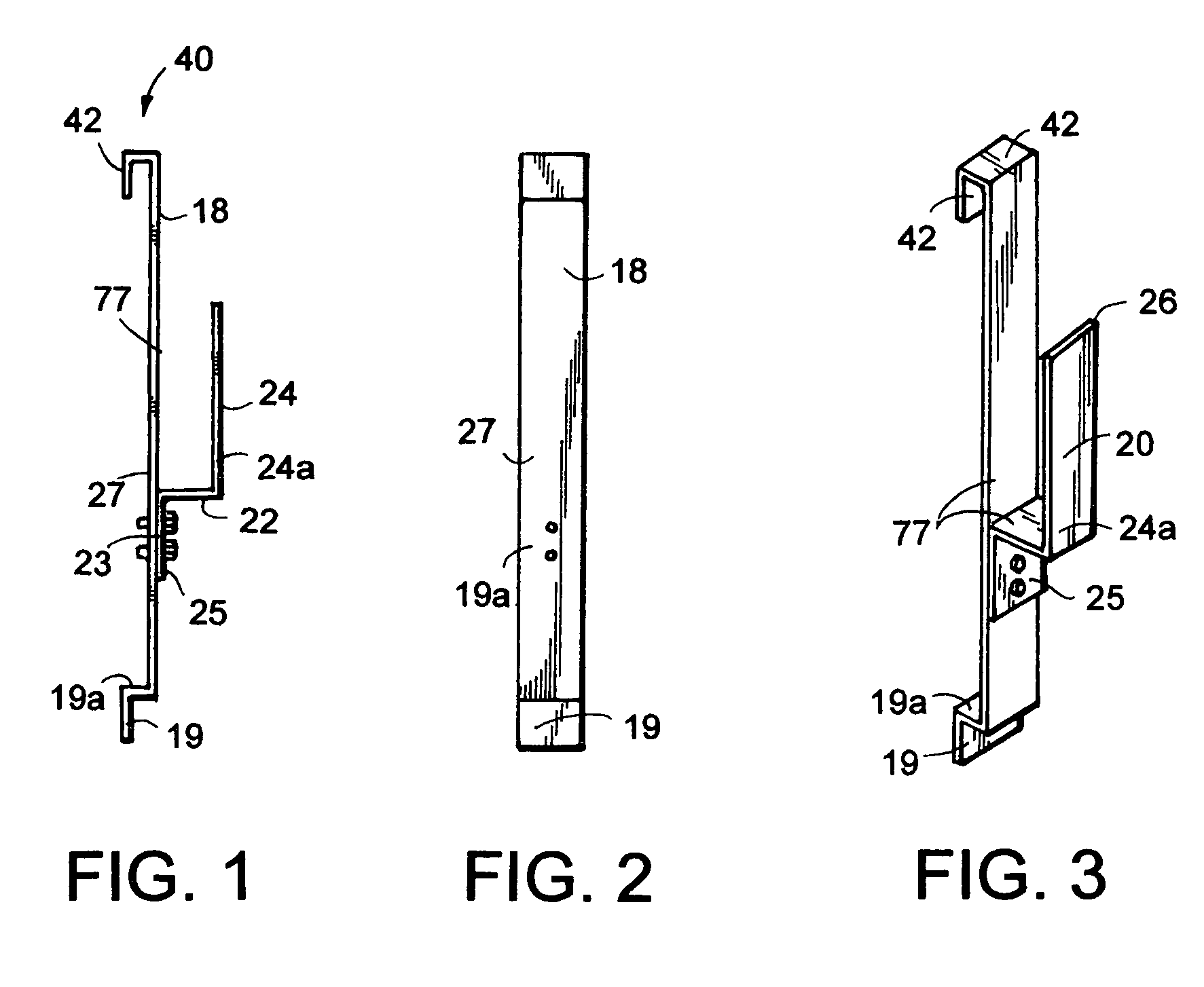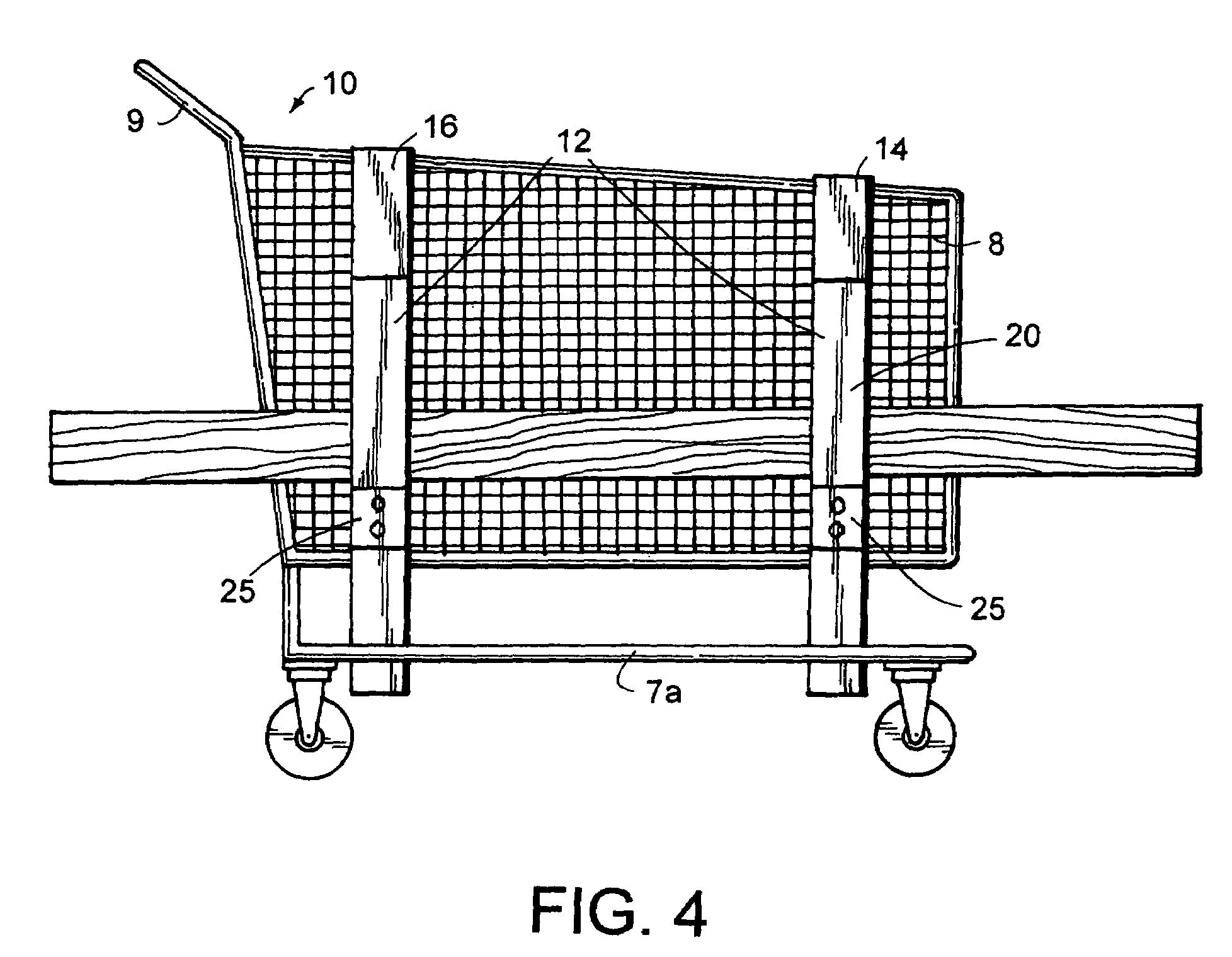Most shopping carts on the cart market and on supermarket floors today are ill-equipped for transporting the long heavy loads, such as wooden boards or narrow furniture boxes.
This difference in height causes the long heavy objects to slide down when the cart is moving or when the customer or a by-
passer accidentally pushes the protruding item.
This is extremely dangerous and can cause not just the breakage of the product and damage to the store, but also serious injury to customers.
It is then hard to accommodate the placement of
small children who came shopping with their parents since if they stand next to a cart loaded in such a manner, a box or a wooden log falling off the top of the basket can easily cause
severe injury.
However, the presence of such under-the-cart compartments necessarily requires a compromise in design.
Therefore, the under-the-cart compartment is usually of limited height and length.
Because of the limited size of such compartments, many long and wide boxes do not fit into this very limited under-cart space.
This protrusion not only makes pushing the cart awkward for the customer, but may also result in
tripping and injuries of the same.
Often such platforms have no handles and are uncomfortable to move and keep an object steadily balanced on.
Furthermore, even if the
consumer has access to such platform carts and even if such carts are comfortable and
usable by regular consumers, there is still a significant problem.
Pushing two carts on a shopping trip, especially with one of the carts being of a
handle-less platform variety is a joyless experience for the customer pushing the carts, as well as a dangerous one for other customers who happen to be on the multi-cart-pusher's way.
Merchandise accidentally shoved off the shelves and jammed aisles only makes the experience of pushing two carts at once that much worse.
Because of the inconvenience associated with leaving one cart unattended and retracing the trip around the store to pick the remaining items, many customers will not return with the second cart and will not buy the merchandise they planned to buy or would have intuitively put into the cart.
This leads to decreased sales.
Over the course of time, inconveniences to customers resulting from inefficient shopping carts can easily amount to millions of dollars in losses.
But the use of such adapters does not solve most of the problems described above.
In particular, the object would still be prone to falling off the height of the cart, creating a
hazard for children.
The extending object would prevent or seriously interfere with customer approach to the rear of the cart and the use of the
handle, thus creating inconvenience and awkwardness of use.
Placement of heavy objects over such break-
handle would stall the cart in place.
Placement of most large items over the top of the cart will also cover the basket and interfere with customer placing smaller-shaped items into the cart.
This would create the whole range of inconveniences to the customer and loss of sales to the stores, as described above.
However, the holder, being constructed of flexible material is prone to wear in everyday supermarket use, particularly at points of attachment to the cart.
Heavy items may cause the holder to open.
Furthermore, the width and girth of the items that can fit into the holder are limited and have to be predetermined at the time of construction.
Such solution is suitable only for slender items, but not for wide, long, heavy boxes.
More complex solutions exist that attempt to address the problems of long items extending over the handle of the cart or into the leg-space of the pusher by placing the long heavy loads on flat platforms, open in the front and the rear, or extending along the side of the cart.
Most of such solutions create additional space on the side of the cart at a cost of decreasing the size of the cart's basket.
Furthermore, the existing solutions for placing large heavy loads along the side of the basket are difficult or impossible to incorporate into existing shopping carts.
A store, wishing to avoid the problems associated with carrying long heavy loads on regular carts has to get rid of its existing, often large and very expensive fleet of shopping carts and replace it with a fleet of redesigned, much more expensive shopping carts.
Such a solution may be too costly to be practical for most stores.
Another problem is that side accessories to carry long bulky items may extend too far outward, thereby causing traffic problems in the store.
The solution of making the side accessories adjustable renders the design much more complex and expensive.
In general, the complex designs of the prior art also render adapting the fleet of shopping carts too costly.
But the purchase price and constant maintenance costs, that complex designs of prior art require, may not be the end of store's expenses if it elects to replace the regular carts with redesigned carts that have platforms at the side.
If the owner of the store decides to sell the premises with equipment (including carts) to another store, as often happens, the redesigned carts may become a burden.
Unless the
purchasing chain sells many long heavy objects, the specialized carts may be of little or no value to it, thereby reducing the value of the premises.
Moreover, altering the cart to delete the portions of the cart specifically adapted for long bulky items, if possible at all, would require much time and effort.
 Login to View More
Login to View More  Login to View More
Login to View More 


